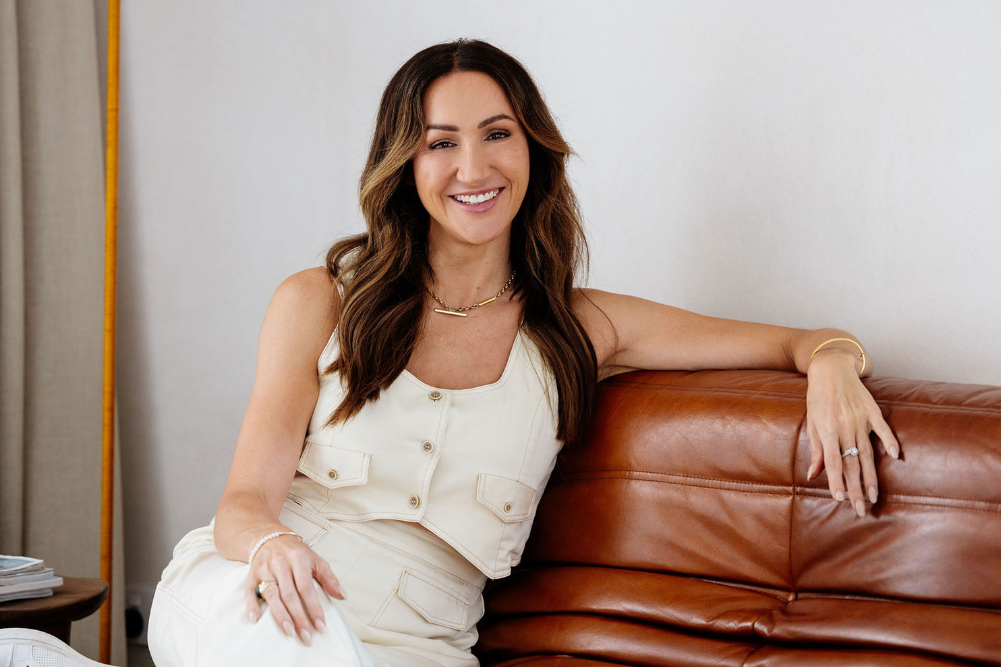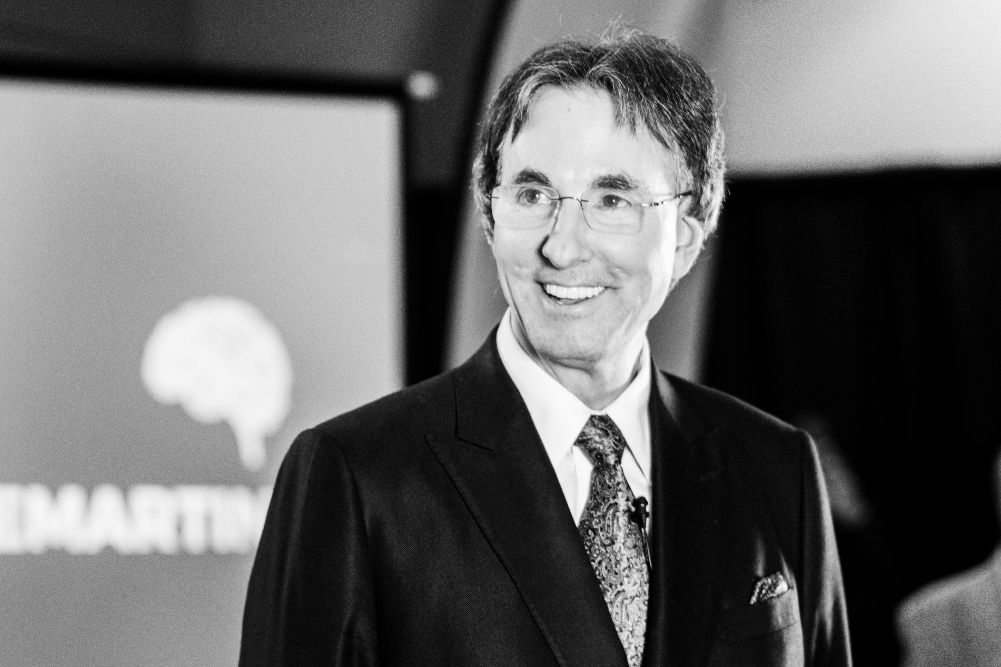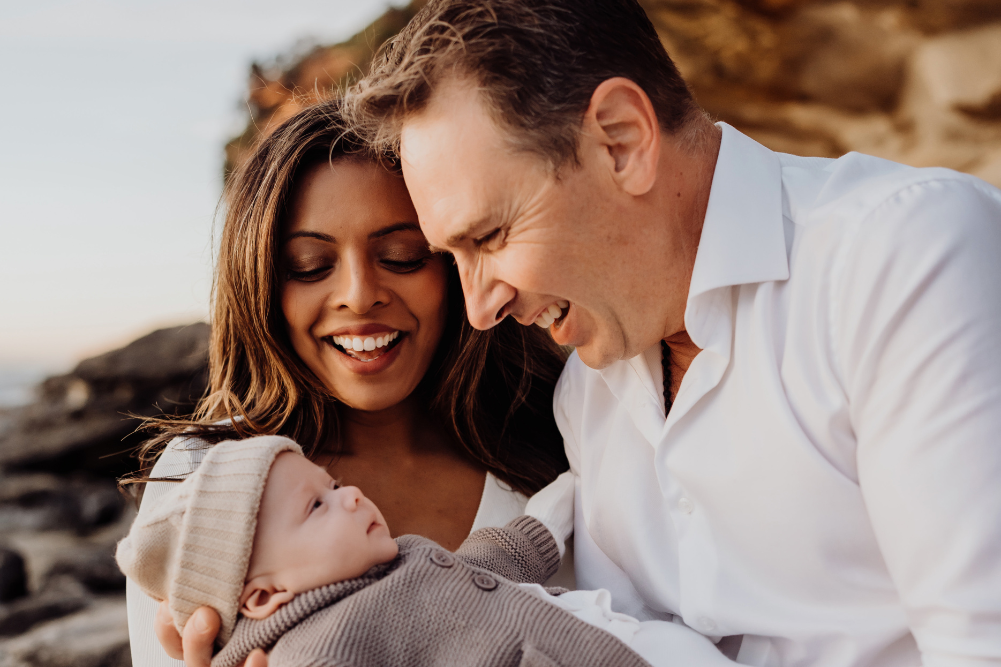The unmaking and making of Jacinta Parsons
Meet Jacinta Parsons, a woman of many hats — broadcaster, writer, public speaker, mother and autoimmune disease survivor. In the unravelling of her identity, she discovers the power to redefine herself anew.
Who are we? No, really? Are we our bodies, our abilities? Our race, our gender, our age? Our passion or our role in our family?
For as long as human beings have existed, we have been seeking a sense of belonging. We’re wired for it. And so when your sense of belonging, and therefore your very identity, is questioned, it can have an incredibly destabilising and traumatic affect.
Just ask Jacinta Parsons — broadcaster, writer, public speaker, mother and autoimmune disease survivor. Over the past two decades, Parsons has had more identities crumble than most. But in the unmaking of her, she has managed to remake herself — and find a new sense of belonging.
The unmaking process
Most public figures have a well-thought-out, tightly edited, deeply researched summary of who they are and what they do. Whether on their website, attached to their social media account or in the press release sent before an interview, this mini-biography tells you a lot about the person you’re about to speak to.
The first two descriptions on author and broadcaster Jacinta Parsons’ website, however, are a picture of a rock, and an island.
“I was kind of going for an absurdist reaction there!” she immediately laughs.
“Obviously, there’s the reference to the song lyrics of “I am a rock, I am an island”, but it’s a reflection on the way humans have always tried to make sense of the world by putting us in categories. At both an intimate and personal level, I think that’s our downfall. We end up restricting or confusing ourselves with what we think we should be, and we lose touch with listening to ourselves and working out who we could be.”
As you read further into her story and her work, though, the description does actually align.
Diagnosed with Crohn’s disease, an inflammatory bowel disease, at age 22, by her late 20s she was suffering such searing pain and internal fissures that she was passing blood and had to have frequent operations. Eventually, it was decided she would need an ileostomy procedure, a diversion of the small intestine through a hole cut in the skin for waste to pass into a bag.
And while the days were dark, she somehow found a solid foundation within herself to accept and live with the condition.
In her first book Unseen: The Secret World of Chronic Illness, she describes both the invisible and isolating experience of autoimmune disease and the strength she had to find within.
“It was this incredible unmasking, because it reduced me to a physical self that no longer did what I wanted to do. I could no longer ignore that I was inside a body. It felt like my whole world got burnt down and I was just in this wasteland of not knowing who I was any more, where my boundaries were, what my relationship to the outside world was with my friends and my family, and who my future self was and what I thought I might do.”
Burning it to the ground
Although it’s clear in all of her writings and insights into her experience that she is not a “self-help guru” nor claims to have all the answers, of course, there are lessons she’s learned as she hit the bottom and found her way back up again. Firstly, the relief of rock bottom.
“I found it really liberating to hit the bottom, and I really hit the bottom. I hit the bottom psychologically and physically after I got my ileostomy bag. I had been in so much pain for years at that point and didn’t know who I was any more or what hope I had.
“What that does, however, is clarify your essence. Having that happen at a very early age is really quite a remarkable, very painful psychological experience, but also an incredibly fruitful one. It allows you to actually burn the ground down and wonder what you might be because the expectations on you then suddenly are removed. You’re incapable of walking! You’re not the physical self you were before! And while there is this enormous limitation, on the flip side there is enormous possibility.”
Listening to Parsons speak about this, there is a sense of freedom in her words — once again, a defying of the categories or identities that the world has given to her.
“I think we live our lives so frightened of the bottom that we restrict ourselves. And so one of the gifts is when you hit the bottom, you know what it feels like, you know how to manage it and that you have strength that perhaps you would never have known about otherwise.”
How do we go from fear to freedom?
“What I do remember is that I made a very conscious decision to accept where I was. I even remember the actual moment when I had to make a decision: I can die here psychologically as I’d lost all hope, or I can make a decision to accept that this is it. This is where I’m at.
“My acceptance was the beginning of the rest of my life, because within that acceptance was a genuine capacity to bring everything back into where you are, here and now. No expectations of the future. No regrets about the past. It’s just a pure moment of acknowledging the whole experience and this is where it is. So, now what?”
The remaking process
While acknowledging that acceptance has been and forever will be an ongoing practice, with her health partially stabilised Parsons was able to step into a new life – with a new voice. Having recently stepped back from the daily hosting duties of ABC Melbourne after three years, she is an ambassador for the Australian Crohn’s and Colitis Association, as well as an active member of the arts and music community and board member for Melbourne theatre company Rollercoaster Theatre. For a number of years, the unseen were the disabled and disadvantaged. But recently, her gaze has also shifted to the other unspoken and invisible cultural category: ageing.
“I see a lot of intersections with my health experience in terms of the unmasking of who we really are and the clarifying that happens through those moments, and the experience of getting older in our society, especially as a woman. But it’s more than that — it’s about how the outside world really desperately impacts the internal experience of us as humans, especially in a Western white world.”
Her interest first began with a desire to understand anger: both her emerging anger as she aged and of those around her. Again, she wasn’t looking for the self-help guru answers to change it. She wanted to understand it. What she found was so much deeper.
“What I found was this kind of undercurrent to why we are so angry. What I heard was that for so long we’ve laughed at ourselves, we’ve been laughed at about our hormones and perimenopause and menopause, and now we’re not laughing any more. We’re cranky and we’re sick of being minimised.”
At this point, I share a story I heard recently: when someone asked an older woman, “Why are you so angry?” the woman turned and replied, “Why are you not?”
“I feel really strongly about this!” Parsons responds. “What I’m seeing is a deep understanding about the fact we should be really angry. There are so many aspects we should be angry about, but even if we just focus on ageing, one of the most problematic and urgent aspects is of the danger of women in our society as they age. The largest growing cohort of homelessness is in women over 55. We’re seeing enormous amounts of domestic violence against women. We’re seeing the disparity of all the intersections that we have as women, whether we’re First Nations or disabled or sitting in the queer space, and whether it’s the danger that we face on our streets or in our homes. If we’re not angry, then there’s something wrong.
“The thing is, we’ve been shown throughout our lives as women that there is no place for anger. We’ve had some brave, strong, incredible younger women recently stand up and be angry, and we’ve seen them get hurt as a result. It’s still not safe to be angry. So I think it’s a really important emotion that needs to find an outlet outside of itself, and then it can transform itself into something really productive.”
The real belonging
Whether it’s disability, disease, race, gender or ageing, at the heart of it Parsons is challenging us to question the assumed identities we have taken on — and what that is doing to us. But instead of some of the disruptive and, again, isolating ways some are pushing the question at the moment, Parsons’ approach is a much more unifying one.
“When those parts of our identity are removed from us — whether it’s because of illness, loss, ageing, trauma — then it’s understandable that we feel lost. We aren’t who we thought we were any more, or who the world wanted us to be. We don’t know where we belong. And at that point, I think the first step towards acceptance is self-kindness. We need to really understand the impact these assumptions about our bodies are, and what that has done to us. And from there, I think it’s about how we love ourselves into other spaces.”
Then, she hopes, we change not only our own sense of self, but how we see everyone around us.
“For example, we first look at other women with the kindness that we wish for ourselves. We look at the younger women, at the older women, the other one next to us, and in that moment we can see how the world has constructed us to talk to ourselves. In that moment, we begin where we are, and break down the separateness from each other.
“This is the emancipation we need. All of us. Instead of being angry — although that’s an important step! — we begin to acknowledge our own power and where we’ve come from. We see the other in a new way.”
In a way, we stop being an island.
“Sometimes it’s really hard to do it for ourselves, and so I’ve been making a practice of really looking at women recently, on the street, passing by them, anywhere I am, and just loving them.
“I sit on a tram and look at everyone on the tram and pretend I am the person who loves them, and feel how I would look at them in that way. And in the same way, I think we can really transform the way we see ourselves, through how we narrate our own stories to ourselves, how we have compassion and love for ourselves and how we look at others as beautiful.
“Ultimately, we have to find a way we can love each other.”








